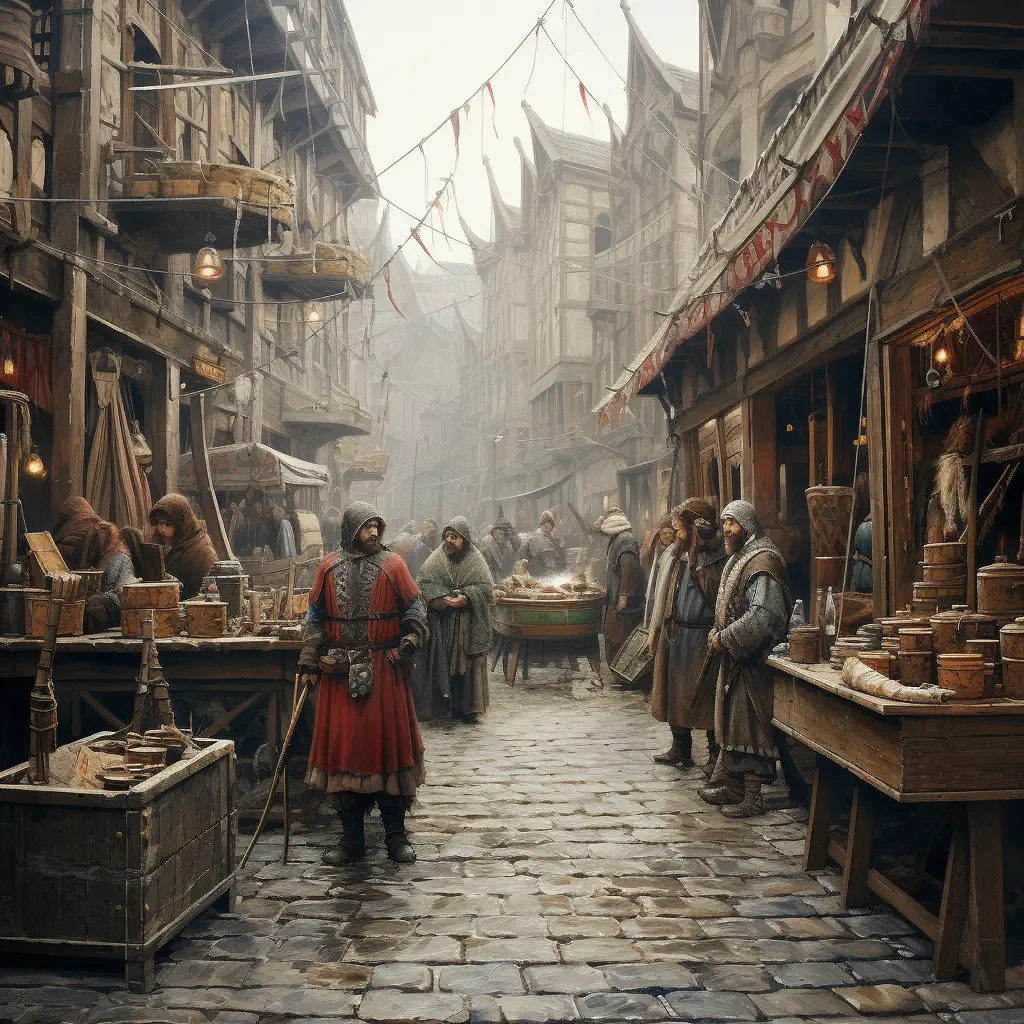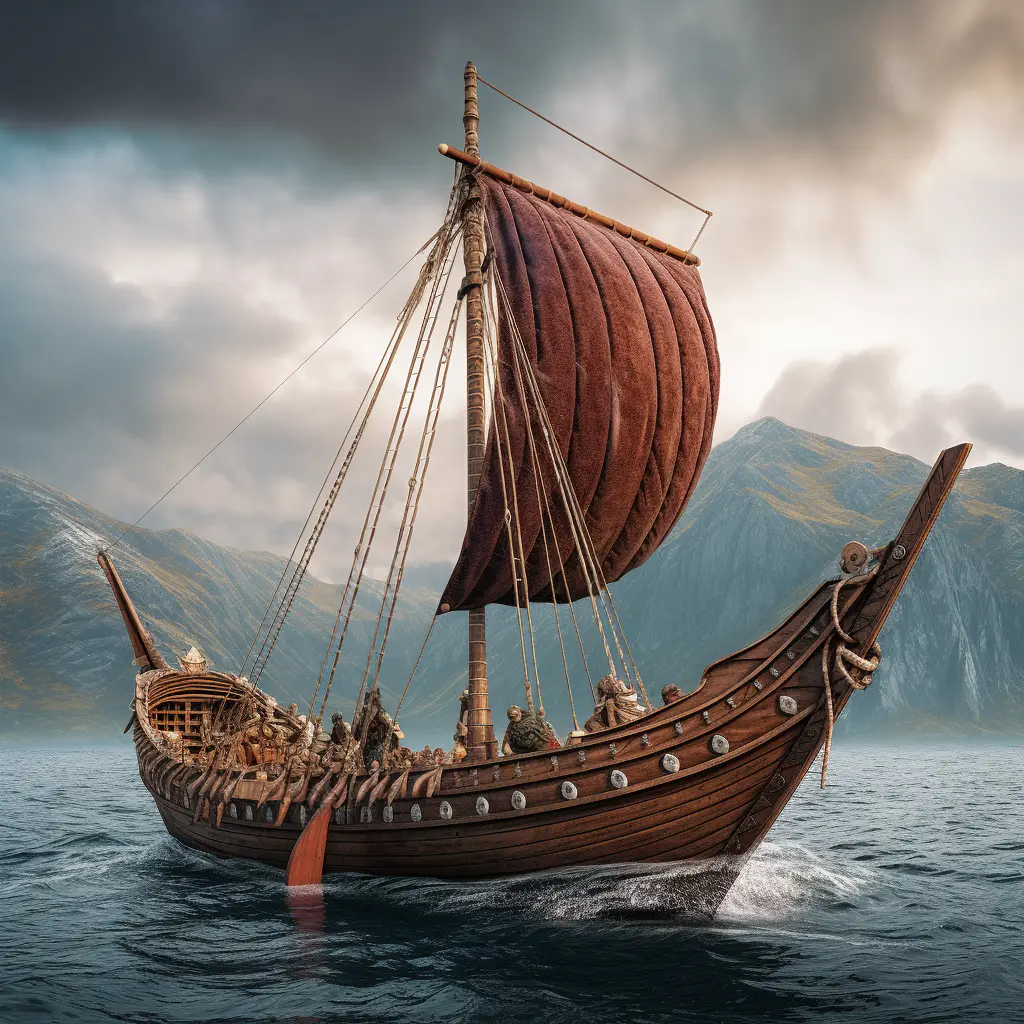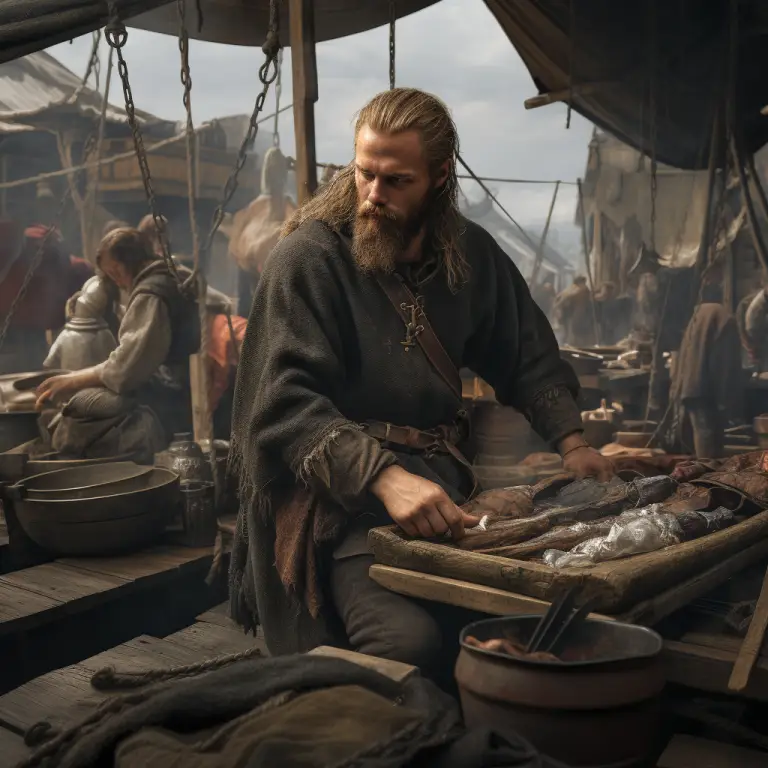Trade: Vikings engaged in trade to acquire crops not native to their region. Through their extensive trade networks, they could obtain items like fruits, nuts, and other goods that were not easily grown in Scandinavia.
Viking trading played a crucial role in the economic and cultural life of the Norse people during the Viking Age (roughly late 8th to early 11th century).
Maritime Trade: The Vikings were skilled sailors and navigators, allowing them to engage in extensive maritime trade. They used a variety of ships, including longships, which were well-suited for both coastal and open-sea navigation.
Trade Routes: Vikings established trade routes that connected Scandinavia with other regions in Europe, the British Isles, the Mediterranean, and even as far as the Middle East. These trade routes facilitated the exchange of goods and ideas.
Goods Traded: Vikings traded a diverse range of goods, including agricultural products, raw materials, handicrafts, weapons, tools, and luxury items. Some of the specific items traded included furs, amber, iron, slaves, and textiles.
Marketplaces: Along their trade routes and in various settlements, Vikings established marketplaces where goods could be bought and sold. These markets were essential hubs for economic activity and cultural exchange.
Silver Economy: Silver was a highly valued commodity in Viking trading. Viking traders often sought silver, both in the form of coins and bullion, as it was a widely accepted and portable form of wealth.
Barter System: While coins were used, the barter system was also in Viking trading. Goods and services were exchanged directly, and a system of weights and measures was employed to ensure fair transactions.
Trade Networks: The Vikings built extensive trade networks, connecting distant regions. They navigated major rivers, such as the Volga in Eastern Europe, and established trade routes that connected Scandinavia to the Byzantine Empire and the Islamic world.
Cultural Exchange: Through trade, the Vikings not only exchanged goods but also cultural elements. They interacted with different societies, adopted foreign technologies, and incorporated diverse influences into their own culture. Establishment of Trading Towns: Vikings established trading towns in strategic locations. Notable examples include Hedeby in present-day Germany, Birka in Sweden, and Kaupang in Norway. These towns served as centres of commerce and cultural exchange.
Role of Middlemen: In some cases, Vikings acted as middlemen in trade, connecting regions that might not have direct contact. They facilitated the exchange of goods between different cultures.
Viking trading was a dynamic and integral aspect of their society, contributing to their economic prosperity and cultural development. The Viking Age marked a period of significant interaction and exchange, leaving a lasting impact on the history of Europe and beyond.


